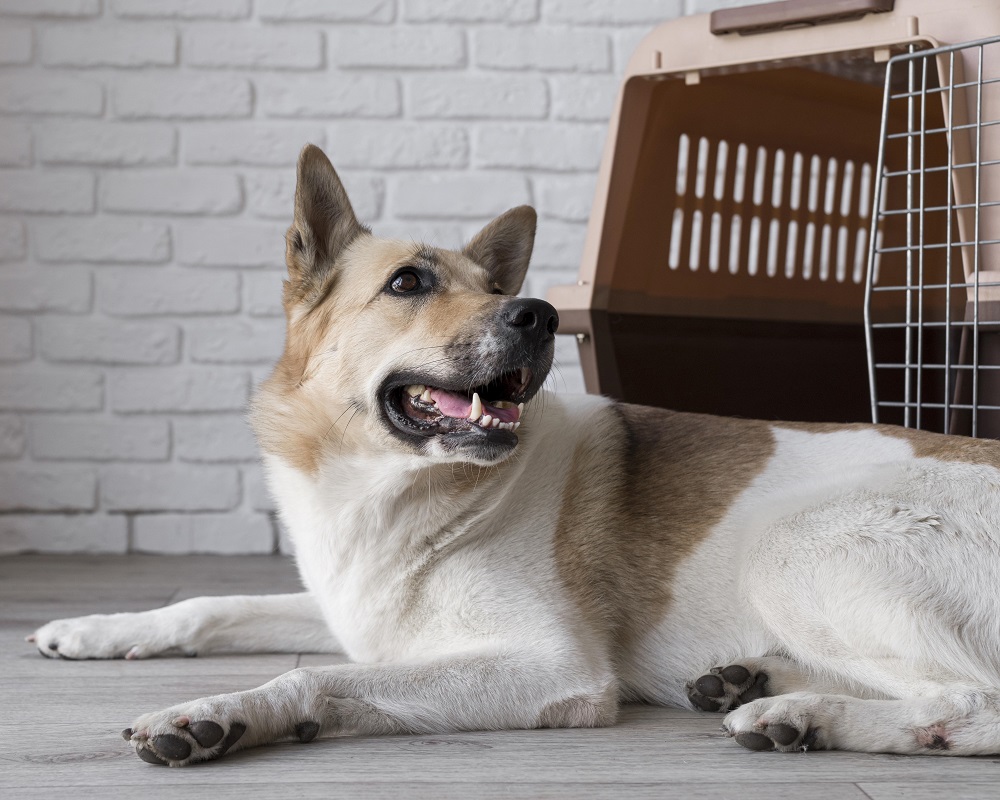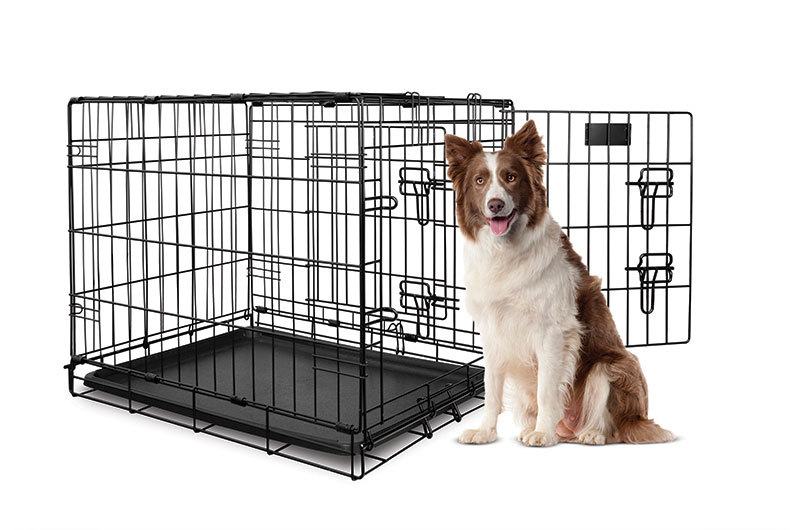The Basics of Crate Training

What is Crate Training? Crating is a positive training technique that revolves around a dog's natural instinct to have a den.
What Crate Training Is (And Isn't)
Crate training is not about keeping your dog in a cage.
Crating is a positive training technique that revolves around a dog's instinct to have a den or a safe space to call their own. Many pet owners who haven't tried crate training find their pets looking for a place to create a den, like under the bed, in a corner or somewhere dark and safe. Your puppy will benefit greatly from having their own space in the house to retreat to.
While it's often used during the puppy phase, if used properly, your pup will enjoy using their crate to eat, sleep and feel safe for many years to come!
The benefits of crate training:
- Gives your pet a sense of security and safety
- Extends the time required between toilet breaks
- Helps anxious pets in times of distress by giving them a safe place to retreat to (for example, during thunderstorms or fireworks
- Provides a no-go zone or a safe space for households with children
- Helps to prepare your pet for travel and vet visits
- Provides a safe place to confine your pet for short stints (i.e. pet-nervous guests visiting)
- Provides a secure sleeping spot
- Provides a safe place to reduce movement for pets recovering from injury
How do I crate train?
Crate training is most effective when you start from day one of owning your puppy.
You'll want to introduce the crate as a positive space using treats, toys and lots of repetition!
Step 1) Place your crate in a space you're happy for your pup to use for many years to come. If you're crate training a young puppy, remember that their first night in their new home may well be their first night away from their mum and a litter of brothers and sisters. Simply sleeping nearby so your pup doesn't think it has been left alone, can help them get through the night. You can gradually move the crate away from you as your pup gets used to their crate and their new home.
Step 2) Use positive reinforcement around the crate. Show your pup that you have a treat in your hand - our more food-driven friends might have already sniffed it out!
Step 3) Use a command like ''crate'' or ''bed'', and guide your pup's nose with the treat, then throw it into the back of the crate. Your pup should follow the food into the crate. Give your pup words of praise when they voluntarily enter their crate.
Step 4) Wait for your pup to scoff their treat and come back out, then repeat! Be patient - it will take a few goes before your pup recognises the association between your command and them being rewarded with treats. Puppies often have a short attention span. So try around 10 repetitions of crating and treating at a time then practice again later.
Step 5) Always praise your pet if you notice them entering their crate voluntarily. You may also choose to feed your pet in their crate to show them that good things happen there..jpg)
Step 6) When you are wanting to have your pup stay in their crate for a longer period of time, use the same technique with food to lure them in. Once they realise that they are 'stuck' in their crate they may start to cry. This is just the pup's instinct to cry out for their mother if they think they have been left alone or lost. As a domesticated pet, in their crate and in your home, they are pretty safe, so it's best to ignore pup while they cry for a bit and eventually they will stop. Try not to approach a crying pup or let them out of their crate while they are crying as this teaches them that if they make a lot of noise they get your attention...not ideal.
Step 7) Never punish your pet by placing them in their crate as this will send your pup the wrong message and set your training back.
Step 8) Avoid letting children or other animals surround the cage making your pup feel trapped - crate covers can help with this if you have a busy household. You can also use a towel to cover the crate to remove visual stimuli/ distractions when it's time for bed.
How does it help with Toilet Training?
Puppies don't like peeing where they sleep or eat, so providing them with a small area to sleep will greatly reduce their desire to soil their bedding. Eight hours is a long time for a puppy to hold their bladder. Initially, try to minimise their time spent in their crate overnight as much as possible and take them to the toilet last thing before bed and first thing in the morning. In the morning, you'll take your puppy to the place you want them to go to the toilet, and reward them with lots of praise for doing so.
Don't be discouraged, accidents will happen (and yes, you'll have to wash a pee soaked puppy a few times). Eventually your pup will learn to hold their bladder and where they should go to the toilet. And if your pup does soil their crate, be sure to give it a good cleandown to reduce the odour and prevent repeat accidents. You may be tempted to lay a puppy pad down in your pups crate to soak up any accidents, but puppies try to chew and eat everything! Please don't leave anything that your pup could potentially chew up and ingest while unattended.
During the day, your puppy shouldn't be in the crate longer than two hours unattended. So you'll need to watch out for signals that they might need to go. If you notice your puppy sniffing or scratching, it's best to take them out to the toilet; this is often a sign for "I'm looking for somewhere to pee".
As a general rule of thumb, you'll want to take your pup to the loo after every meal, after a nap, after playtime and every 2 hours aside from that. Yup, a lot!
If you're unable to watch your puppy during the day, keeping them in a small area with hard floors like a bathroom is ideal. You'll place their crate, food, water, toys in this area for them. Note that carpeted areas, rugs and mats are pee-attractants.
What size crate do I need?
The thing about puppies is - they grow, and some of them, a lot! 
You might want to find a crate with a divider. That way, you can adjust the size of your crate as your puppy grows. You also want to find a crate that is big enough for them to easily turn around in but not enough to walk around. If your pup has enough space, it may think it has enough room to pee on one side and sit on the other.
Pop in-store and chat with the Small Animal team about what size would be appropriate for your furbaby.
Browse Crates
What if I have two puppies/dogs?
One crate per dog is important, even more if they are siblings. Sibling syndrome can negatively affect their interaction with other dogs and humans; therefore appropriately separating them during sleep and training is vital.
We hope this helped with the basics of crate training. Need more advice? Please contact our friendly Small Animal team, we can answer your questions!
Images supplied by freepik.








